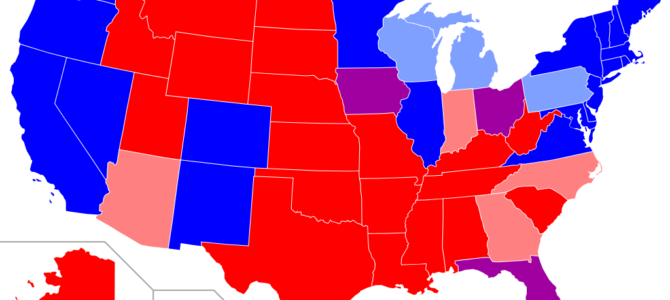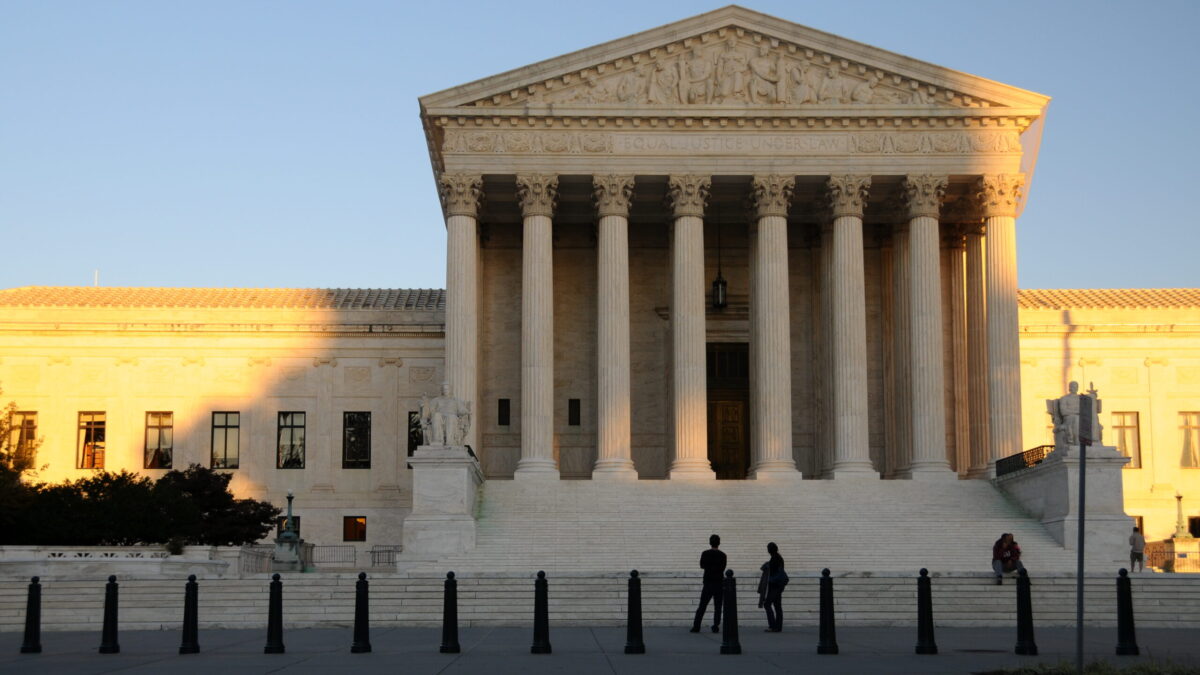
When Donald Trump was president and filling the federal court system with conservative jurists, some leftists yearned for a “national divorce.” Richard Kreitner, in “Break It Up: Secession, Division, and the Secret History of America’s Imperfect Union,” argues that a unified America does terrible things such as promoting slavery, instituting Jim Crow, starting wars, and incarcerating minorities. Kreitner asserts, “Secession is the only kind of revolution we Americans have ever known and the only kind we’re ever likely to see.”
But now the left is once again in charge, with a tenuous hold at the federal level fortified with near-monolithic control of elite institutions — corporate media, social media, Hollywood, academia, and big business. In the face of the left’s remorseless quest for totalitarian power, some conservatives are now also calling for a “national divorce.”
According to a September survey by the Center for Politics at the University of Virginia, they’re not alone, with 52 percent of Trump voters and 41 percent of Biden voters agreeing to some extent that America should split up. Into this mix comes conservative writer David Reaboi, who has posted thoughtfully on the topic, writing that “National Divorce Is Expensive, But It’s Worth Every Penny.” Reaboi is hardly alone, with Michael Anton, Michael Malice, and others pointing to the utility or inevitableness of a national breakup.
That something should happen or will happen doesn’t mean it would be easy. Even more grimly, Reaboi points out the obvious that “one day, the United States will end. History teaches us that regimes, like all human creations, rise and fall — and world-bestriding empires fall harder, faster, and more surely than that.” To drive the point home, he draws from Allan Bloom to argue that “the differences between Red and Blue America are far deeper than any issues we interact with on the surface; they’re essentially pre-political.”
This Isn’t Our First Fight
Lest we believe our times unique, Americans have been at each other’s throats before.
In the presidential campaign of 1800, Federalists and Democratic-Republicans were no strangers to partisan strife. Personalizing the political divide, Thomas Jefferson’s supporters smeared President John Adams as having a “hideous hermaphroditical character, which has neither the force and firmness of a man, nor the gentleness and sensibility of a woman.” Adams’s campaign labeled Jefferson, the vice president, as “a mean-spirited, low-lived fellow, the son of a half-breed Indian squaw, sired by a Virginia mulatto father.”
The election of 1860 was even worse—and it was followed by a civil war in which one in 25 men killed one another or succumbed to disease in a fight to make men free. We tried a national divorce once and it didn’t work so well. A modern national divorce would require a practical path to governance. It’s not as easy as it looks.
The America we know today almost didn’t make it. Much has been written about the challenges faced by the colonists, the struggles of the War for Independence, and the brutal carnage of the Civil War. But little has been said about that dim time in the American experience between 1783 and 1789, after victory over the British and before the ratification of the Constitution.
A Tenuous Start
That was also a time of maximum danger, intrigue, and heated passions when Americans were not yet sure whether bullets or ballots would decide the fates of governments. The infant America was governed under the Articles of Confederation, a weak system of national government in which the states reigned supreme. In the six years that elapsed from the end of the Revolutionary War to the ratification of the Constitution, America was nearly torn asunder by rebellion.
In 1786, farmers in western Massachusetts rebelled. Desperate over their inability to pay taxes and angry about a system that favored wealthy Boston merchants, they burned courthouses to destroy tax and loan records, then marched on Boston. In nearby Poughkeepsie, N.Y., sympathy riots broke out. Capt. Daniel Shays almost toppled the commonwealth’s government before his followers were defeated by the state militia.
Shays’s Rebellion so shocked the political leaders that it proved to be a major consideration in the minds of those who drafted and ratified the Constitution a few months later. On Sept. 17, 1787, they agreed to present the Constitution for ratification by state conventions.
The Constitution That Almost Wasn’t
The success of the Constitution was by no means assured. It almost failed in Philadelphia when the constitutional convention almost broke apart over the vexing issue of slavery that would tear the nation a little more than threescore and 10 years later. The delegates also wrangled with how to apportion representation in the new Congress.
Under James Madison’s Virginia Plan, both houses of Congress would have had proportional representation. The small states would have none of it and rallied behind the New Jersey Plan, which would have preserved each state’s equal vote in a one-house Congress. It took another month of discussions before the Great Compromise resulted in today’s present system of House and Senate, with the House representing the people and the Senate representing the states.
Then the Constitution almost failed when it was sent out for approval. The Constitution needed to be ratified by nine of the 13 states to go into effect. The first five ratifications were quickly accomplished.
But on Feb. 6, 1788, Massachusetts’ constitutional convention ratified the new form of government on the narrow vote of 187 to 168, and only after Gov. John Hancock and Samuel Adams negotiated a demand that the Constitution incorporate a Bill of Rights should it pass. The no votes mostly came from the western part of the state, where Shays’s Rebellion saw widespread support. The Constitution was then rejected by Rhode Island’s grassroots democracy 2,708 to 237.
After the Massachusetts convention recommended amendments to the Constitution, all subsequent state conventions, except Maryland’s, agreed that a Bill of Rights was needed. Still, it wasn’t enough to prevent very close votes in New Hampshire (57 to 47); Virginia (89 to 79); and New York (30 to 27). Then North Carolina’s convention adjourned without voting on the Constitution.
In October 1788, after setting up the timetable for the new government to take over, the Congress of the Confederation achieved a quorum for the last time. On March 4, 1789, the new republic was born, and the coup d’état was complete.
Better Solutions than a National Divorce
A national divorce? No, thank you. Breaking up is hard enough — creating a new government that can both secure liberty and survive is even harder. Rather, let us strive to repair the nation we have.
Returning to the Constitution would be a great first step. The surest route to doing that would be to end federal primacy over state power via restoring the original meaning of the Commerce Clause, while forcing Congress to legislate rather than hiding behind unelected bureaucrats by rediscovering the nondelegation doctrine.
There are reasons to be hopeful that these limitations will be enforced with renewed vigor. Just this year, the Texas Public Policy Foundation (TPPF), of which I am a part, successfully had the Centers for Disease Control and Prevention’s federal eviction moratorium struck down as exceeding federal power under the Commerce Clause. It was the first federal regulation struck down under the Commerce Clause in 20 years.
As for the nondelegation doctrine, in 2019 four justices of the Supreme Court expressed a willingness to reinvigorate the long-dormant doctrine, even though it had gone unenforced for more than 80 years. The lower courts seem to be taking those justices’ statements seriously. In another case brought by TPPF last week, the Fifth Circuit Court of Appeals stayed the Biden administration’s federal vaccine mandate, citing concerns that it may violate the nondelegation doctrine.
Taken together, a proper application of the Commerce Clause and the nondelegation doctrine could loosen the national relationship enough that a formal divorce would be neither necessary nor desired.









